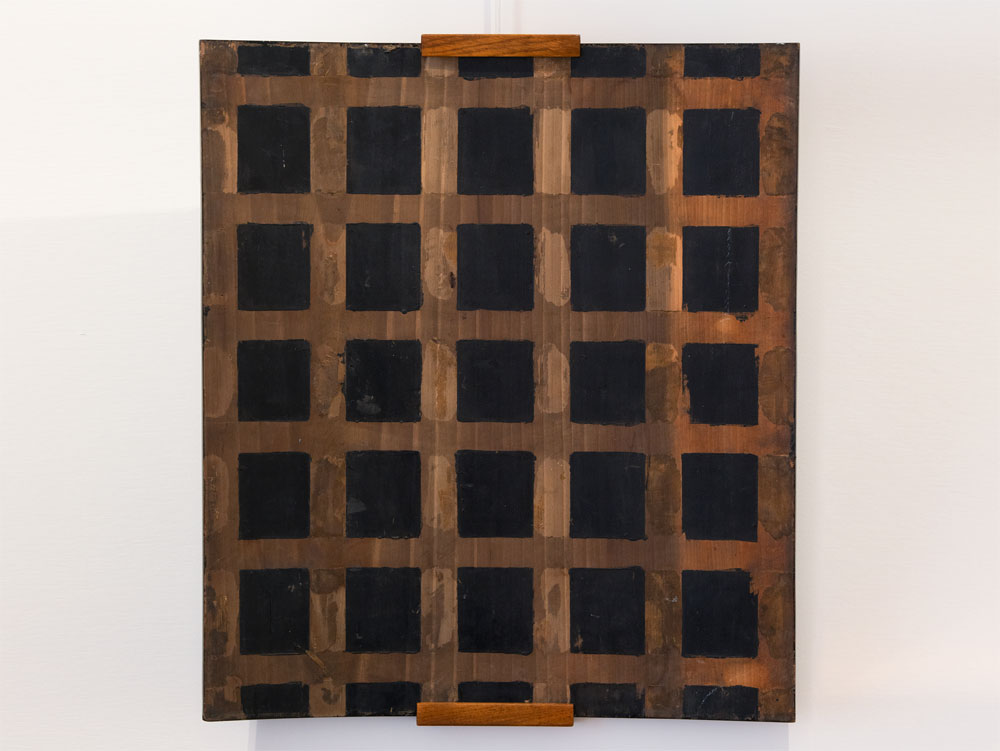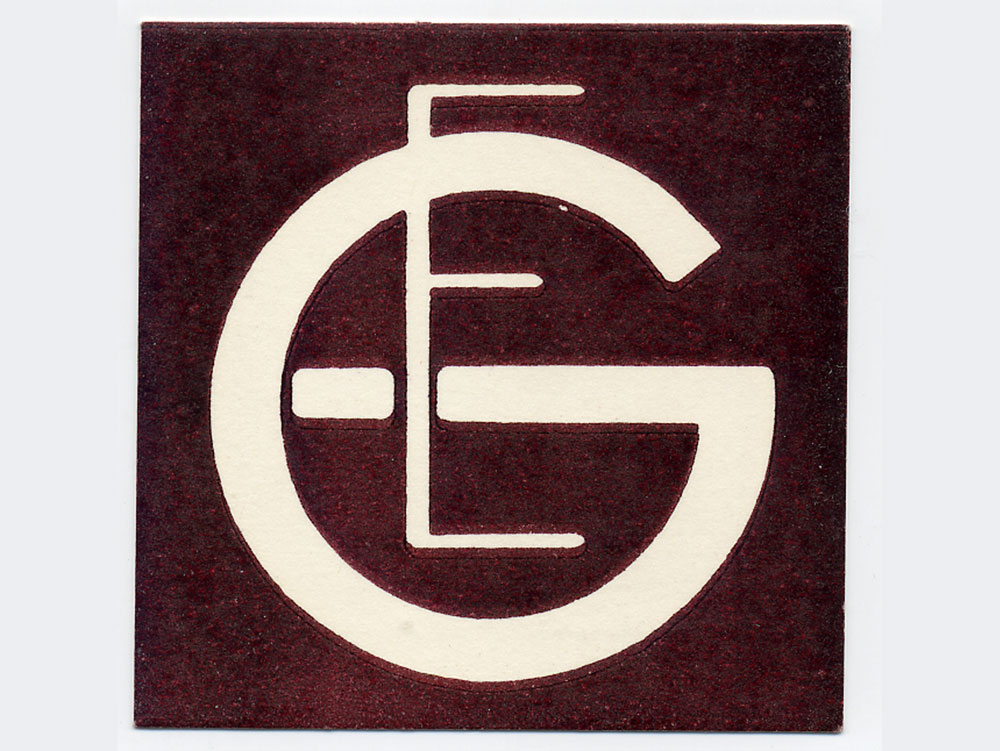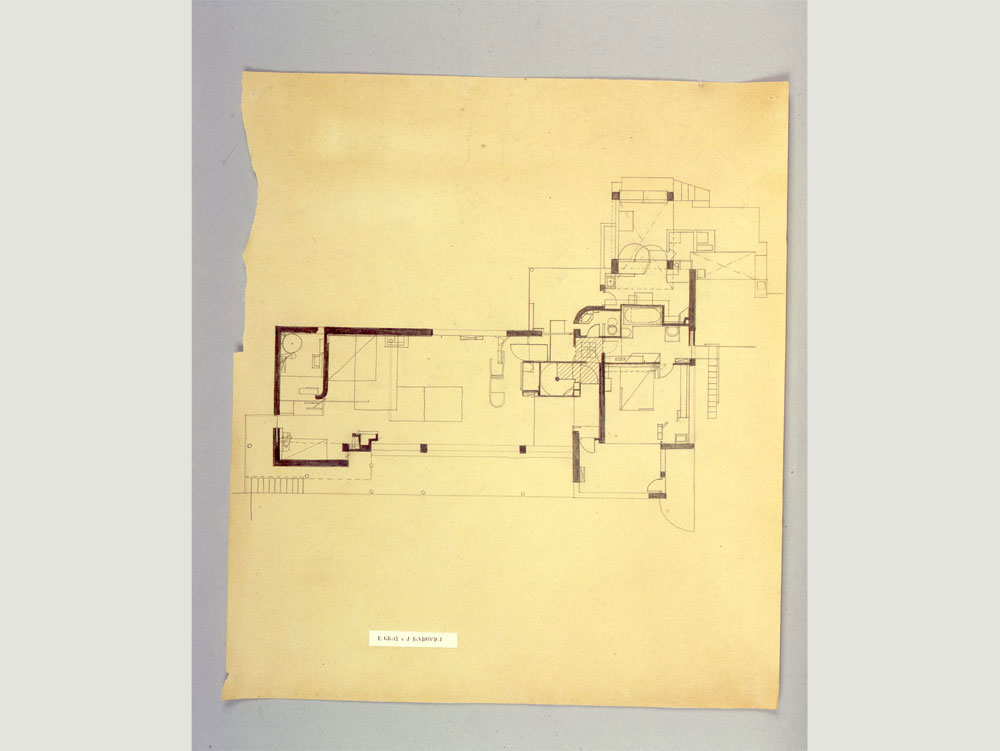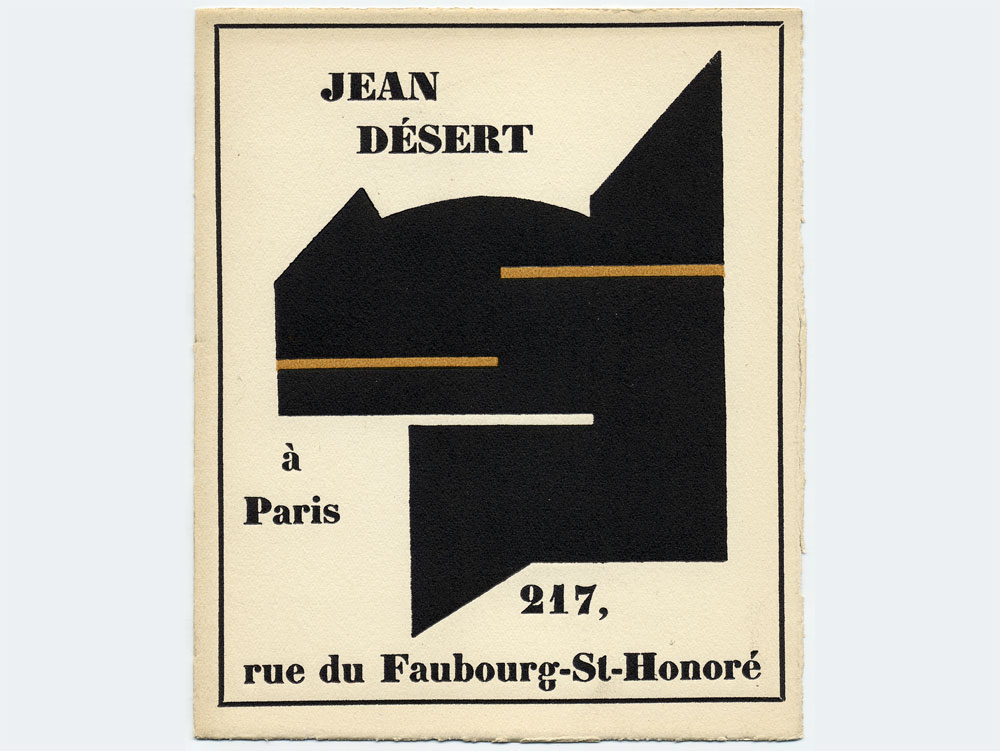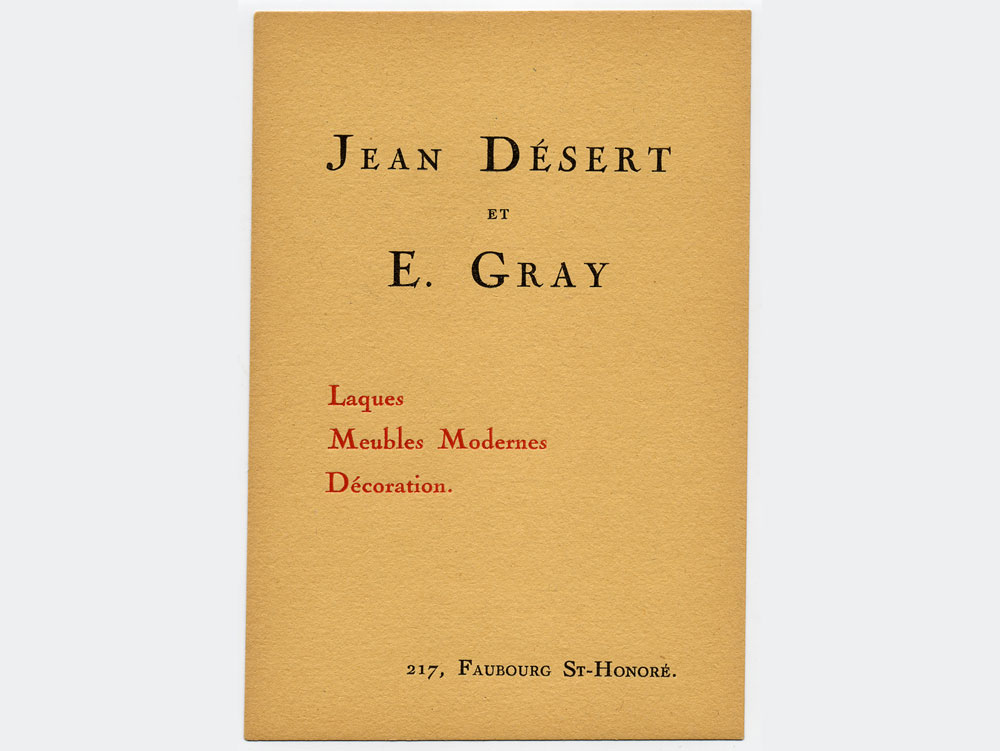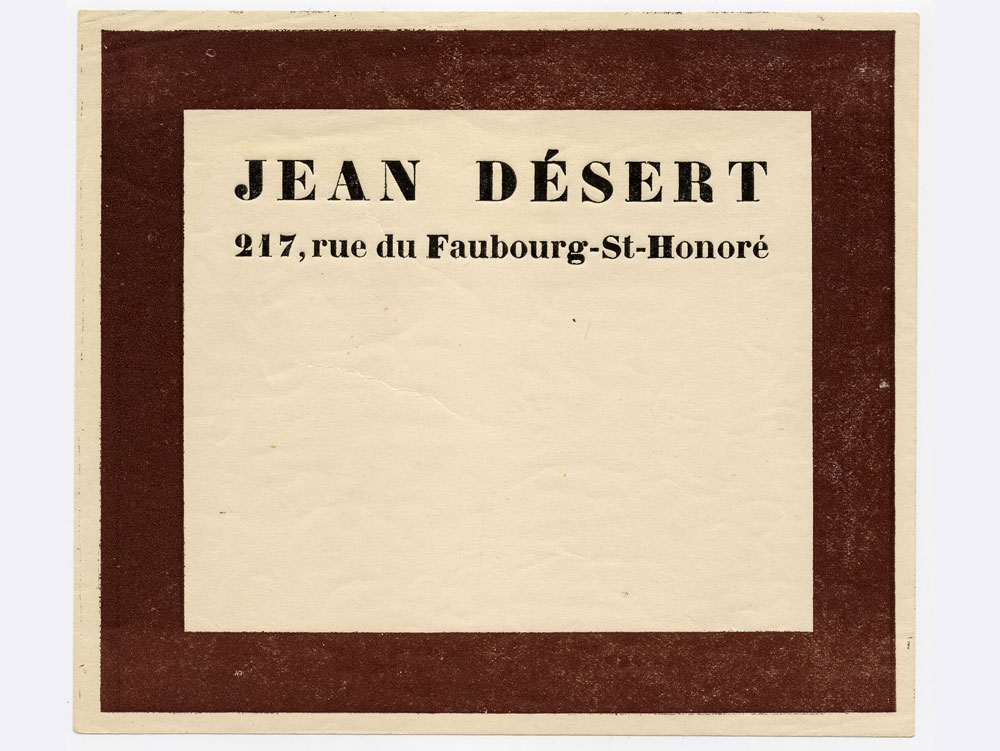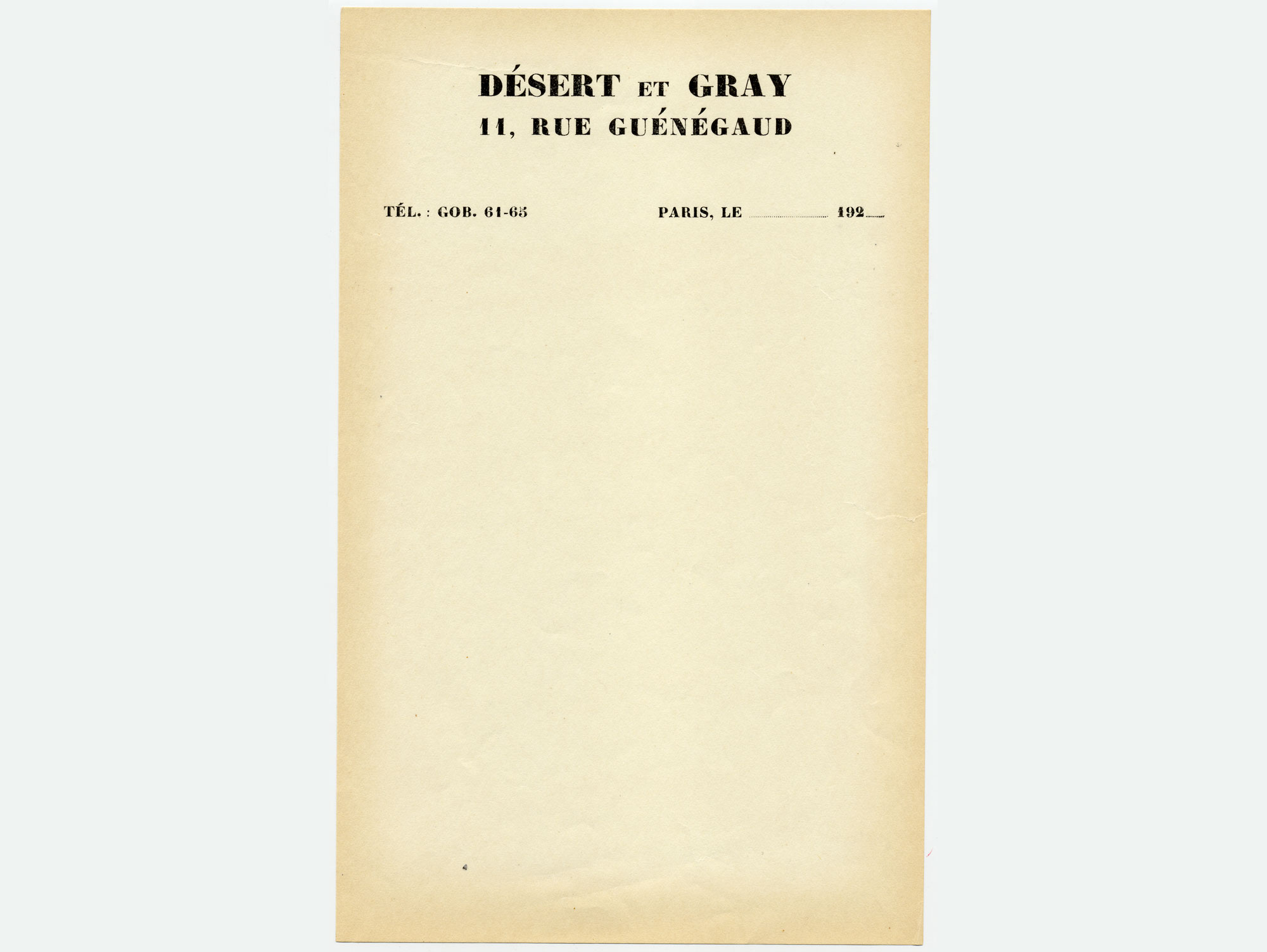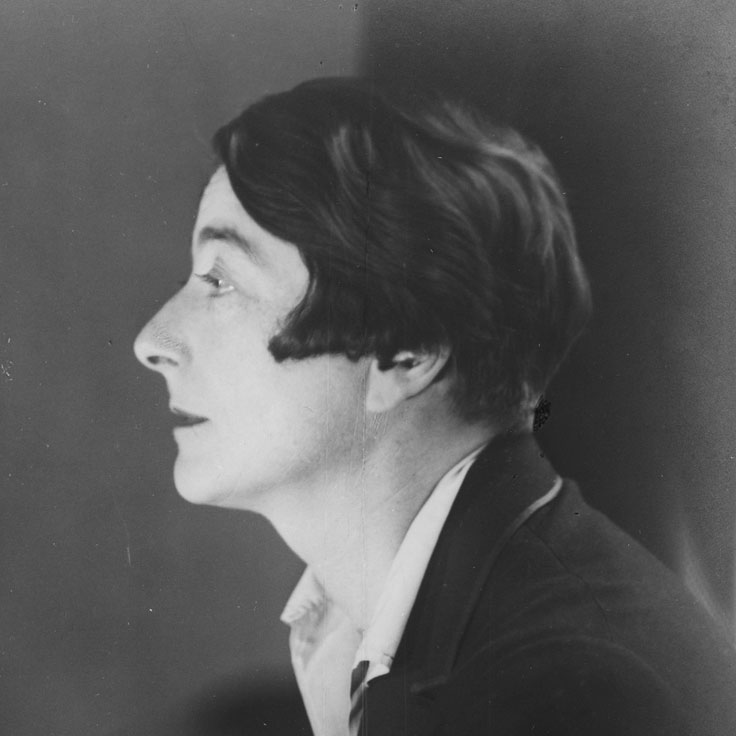
EILEEN GRAY
9th August 1878 (Enniscorthy) – 31st October 1976 (Paris)
BIOGRAPHY
Interior designer, creator of furniture, of light fittings, of carpets and of craft objects.
Born in Ireland, Eileen Gray studied at the Slade School of Fine arts in London then in 1902, in Paris, at the Académie Colarossi and the Académie Julian.
More interested by the decorative and applied arts, she learnt the art of lacquer with the Japanese Sugawara, whom she met in 1907 and the art of carpetmaking. She moved into rue Bonaparte where she would stay until her death. In 1913, her first lacquer creations were exhibited at the Salon des artistes Décorateurs and noticed by Jacques Doucet who bought the four-leaf screen Le Destin from her.
In 1922, she gained fame for the apartment which she decorated for Mrs Mathieu-Lévy, owner of the Salon of the milliner Suzanne Talbot; she designed carpets, lamps, decorative lacquer panels, and furniture including the sofa Pirogue and the armchair Serpent.
She exhibited at the Salon d’Automne where she met Robert Mallet Stevens who ordered some items for the Villa Noailles. Still in 1922, she opened her boutique “Jean Désert” where she presented her lacquers and carpets. Her first contacts and her meeting with the architect Jean Badovici were the starting point of a radically modern creative phase.
Her first essay in architecture was a masterstroke which saw the birth of her flagship piece: the Villa E. 1027, built for herself and her patron Jean Badovici in Roquebrune-Cap-martin (1926-1929). The plans and the drawings were presented at the first exhibition of the UAM of which Eileen Gray was a founding member. As for each of her future constructions for personal use, she also designed the furniture whose aesthetic would develop from 1929 with the use of chrome-plated tubes, glazing, aluminium, painted wood and cork, put to use in lightweight, mobile and convertible items. She completed some iconic works of modernity, such as theTransat armchair, the Bibendum chair and the Satellite mirror. She then decided to build a new house at Castellar near to Menton, which she called Tempe a Pailla. Again, she designed all the furniture which she integrated even more closely with the architecture. The construction was completed in one year in 1934. At the same time, she continued to create screens, this time using materials, such as celluloid, that differed greatly from those that she used at the start of her career. Eileen Gray still used metal, and more particularly metal rods, to create armchair structures under tension from canvas or in sheet metal. In 1937, she designed a holiday centre, regional Club and lodging equipment for Le Corbusier’s Pavillon des Temps Nouveaux, at the International Exhibition of Arts and Technologies in Modern Life.
Between 1954 and 1958 she completed her last house, Lou Perou, located near Saint-Tropez to replace the one in Castellar, which she had just sold. In this unique house piece, she would notably undertake a partitioning of the existing rooms to create different areas, producing a remarkable fusion between new and old spaces.
It was only at the end of his life that people started to get interested in her work again, in particular, following the sale of the content of the apartment of the fashion designer Jacques Doucet in 1972. The same year, the British Society appointed her Royal Designer for Industry.
She died in Paris on 31st October 1976.

